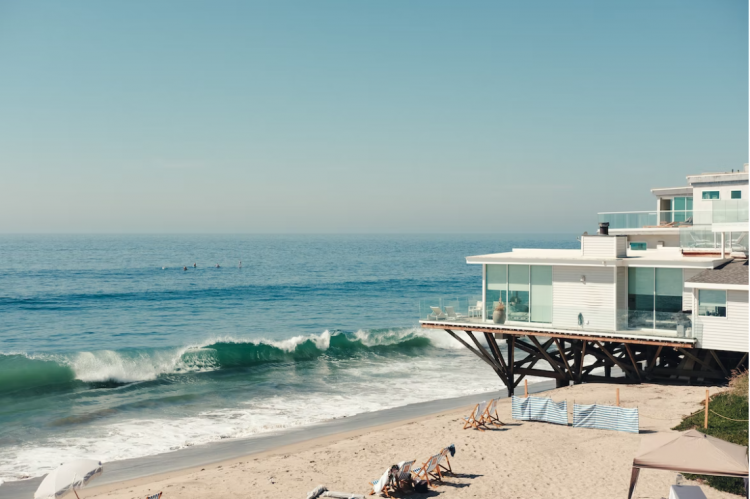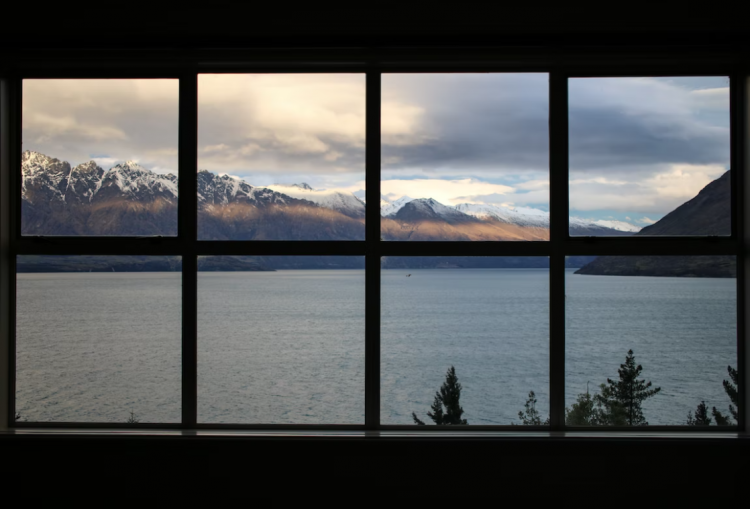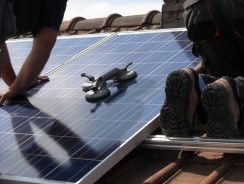
Proper planning for weatherproofing your beach property before the winter weather arrives is a good idea.
Low temperatures, strong winds, and nonstop rain can damage your structure and exacerbate minor problems in your house when it is near the beach. Spend some time inspecting and fixing your beach house's exterior issues before you find yourself in significant difficulties and in need of an urgent remedy.
We have added a few tips for making your home weatherproof. Additionally, you may lower your annual energy costs and improve the comfort of your house.
8 Tips for Making Your Home Weatherproof to Withstand Hazardous Elements
You might be surprised to learn that,
- Weatherproofing your beach house might help you save up to 15% on cooling and heating expenses.
You may save hundreds of dollars each year by figuring out how to insulate or seal off particular areas of your home. Let’s check out the 9 best and most affordable tips to make your home weatherproof.
-
Weather Strip Windows and Doors
The windows and doors are probably to blame when you shift into such a room in your beach property that seems unusually drafty during the winter or sweltering in the summer. You may place a candle near the window or door to examine if it flickers after being completely closed.
The external doors should also be checked. In order to keep outside doors fully sealed and stop heat loss through them, add some door sweeps if you feel the wind coming from them.
By filling up the spaces in the floor or roof, you may control the temperature of a room and save energy costs. You can also keep out extra moisture and filth.
Cost: It is estimated that you will spend around $20 to $30 to buy a weather strip. You can easily find one at your local hardware store.

-
Proper Installation of Storm Windows
Thanks to the effective sealing provided by storm windows, your power expenditures should decrease. If your bill starts to increase quickly, there may have been an error during the window installation process.
Verify that no gaps or fractures have developed over the previous year. You can use caulk or weather stripping to seal gaps, depending on their type. If you find no holes or cracks, look for dampness or water damage in the middle of the panes.
This could manifest itself as mildew, decaying timber, puffy sidewalls, or peeling paint. If you notice one of these indicators, call a specialist to assist in repairing the damage and correctly reinstalling the windows. Additionally, if a window is exceptionally difficult to open, there may be a problem with the size of the window or the capacity of the material.
Cost: You don’t have to spend a dime to properly install storm windows.
-
Be Certain of Insulating the Attic Door or Basement
Recently, we found a property in Ocean City, MD, that has an exceptional sea view. The owner of the house discovered a 1/32-inch gap, yet it seemed like the door had a 5-inch opening. The gap had a big impact on how the air moved throughout their beach house. An uninsulated basement, crawl space, and attic allowed them to lose a lot of heat and air. Luckily, they fixed the problem by insulating those areas.
Cost: To cover your attic entrance and retain more air inside your house, you may purchase an insulation board or tent for about $40. Although adding insulation to your basement or attic is expensive, doing so will pay off handsomely.
-
Insulate the Water Heater
You will be glad to know -
- Adding insulation to a hot water heater can cut energy loss by 25% to 40%.
Not only do you need a blanket in winter, but also your water heater gets benefited from a blanket. By insulating the area surrounding your water heater, you may prevent heat loss and reduce the amount of energy your water heater needs to operate.
To ensure that your hot water heater is functional during the winter, think about putting on a blanket. You must consider using a blanket that is suitable for your heater. It is unsafe to use a blanket that isn't on your bed since it might catch fire.
Cost: Water heater blankets are available as built or can be made from scratch. Typically, it will cost $20 or maybe less.
-
Apply Honeycomb Cellular Shades
You can keep your beach house warm during the winter in a variety of ways. Apply measures on exposed areas such as windows or doors to prevent draft or cold air to come in. Weatherstripping or honeycomb shelters can be used to create these.
Honeycomb cellular shades aid in blocking breezes and cold air coming from both the window and its frame. In order to exploit the sun's energy to warm the home, it is vital to shut them at night when it is cooler outside.
|
Bonus Tip - When placed within a double-glazed, weather-resistant window, certain types are eligible for 2011 federal energy tax credits. This can lower summer cooling expenditures by hiding the sun's rays. |
Cost: Prices for honeycomb cellular shades generally range from $30 to $100.
-
Clean Gutters
Your beach house may be weatherproofed outside in addition to inside. Cleansing the gutters can shield the insulation in your attic from water damage. To ensure appropriate rainfall flow, clean leaves and other debris out of gutters and drains that are easy to reach. Water that has been trapped can build up and grow, resulting in harm. Potential build-up can be avoided by using a plastic, wire, or special leaf filter.
Cost: Cleaning the gutters is obviously free; you don’t have to spend anything here.
-
Tidy Up the Exterior
A neat exterior not only looks good, but it will also show any maintenance concerns that can be fixed before they worsen. To prevent them from becoming slick, remove dirt, leaves, and other debris from decks, pavement, and walks. Decks may be cleaned with a hard brush or by using a pressure washer to remove surface debris. Check shed roofs for any cracks or rips that can allow water to enter.
Cost: Since we are talking about cleaning the exterior of your beach home, you barely need to spend any money. It may cost $10 for a broom and $20 for a rag, sponge, or other dusting supplies.
-
A Programmable Thermostat is Handy
Did you know?
- A programmable thermostat may save yearly heating and cooling expenses by roughly $200.
Finding strategies to make your internal climate control system operate more effectively and reduce your electricity expenditures is crucial since heating your beach house in the winter might result in greater utility bills.
Nowadays, controlling the thermostat is simpler than ever thanks to various kinds of smart home technologies that offer remote monitoring. A programmable thermostat is an option for those who are frequently busy since it enables them to regulate the temperature on their own schedules and not require assistance from a third party beforehand.
Cost: Electronic programmable thermostats can cost anywhere from $20 to $150 for a single unit. If you add net access, the cost can rise to about $350.
Well, those were the 8 tips for making your home weatherproof and designing a beach house to withstand the elements. You can implement your own DIY strategies along with the ones that we propose in this article. Just be careful while doing anything dangerous.









Author
Homesgofast com
Homesgofast.com is an international real estate portal and news source for Google news. Publishing international real estate, finance, homes and travel-related news and blogs for a targeted audience since 2002. Each news item is circulated to thousands of potential readers each day and is also available to the millions of people who sign up for Google news alerts. Find homes offered for sale and to rent direct from owners and some of the best real estate agents from over 35 countries